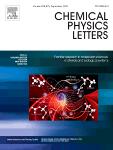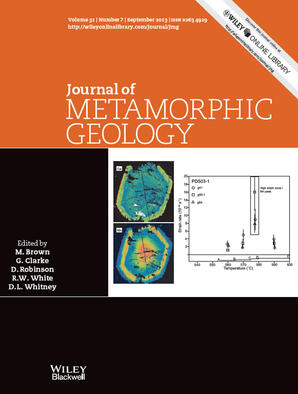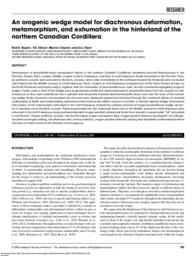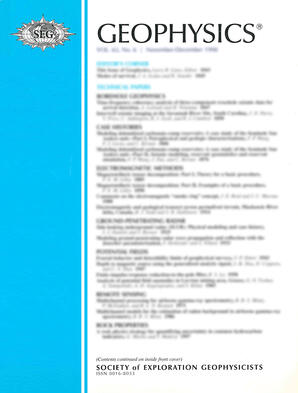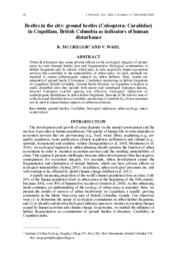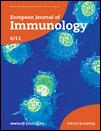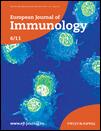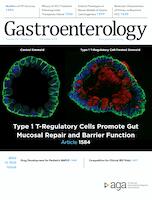Science and Technology
Related Works
Content type
Digital Document
Abstract
We have synthesized a series of cyclopentadithiophene–benzochalcogenodiazole donor–acceptor (D–A) copolymers, wherein a single atom in the benzochalcogenodiazole unit is varied from sulfur to selenium to tellurium, which allows us to explicitly study sulfur to selenium to tellurium substitution in D–A copolymers for the first time. The synthesis of S- and Se-containing polymers is straightforward; however, Te-containing polymers must be prepared by postpolymerization single atom substitution. All of the polymers have the representative dual-band optical absorption profile, consisting of both a low- and high-energy optical transition. Optical spectroscopy reveals that heavy atom substitution leads to a red-shift in the low-energy transition, while the high-energy band remains relatively constant in energy. The red-shift in the low-energy transition leads to optical band gap values of 1.59, 1.46, and 1.06 eV for the S-, Se-, and Te-containing polymers, respectively. Additionally, the strength of the low-energy band decreases, while the high-energy band remains constant. These trends cannot be explained by the present D and A theory where optical properties are governed exclusively by the strength of D and A units. A series of optical spectroscopy experiments, solvatochromism studies, density functional theory (DFT) calculations, and time-dependent DFT calculations are used to understand these trends. The red-shift in low-energy absorption is likely due to both a decrease in ionization potential and an increase in bond length and decrease in acceptor aromaticity. The loss of intensity of the low-energy band is likely the result of a loss of electronegativity and the acceptor unit’s ability to separate charge. Overall, in addition to the established theory that difference in electron density of the D and A units controls the band gap, single atom substitution at key positions can be used to control the band gap of D–A copolymers.
Origin Information
Content type
Digital Document
Abstract
13C hyperfine coupling constants of the MuC60 radical have been measured by muon level-crossing spectroscopy, using a dilute solution of 99% enriched 13C60 in decalin. The signs as well as the magnitudes of the hyperfine constants were determined. The results range from 52.6 to −25.4 MHz and support those calculations which predict an extended distribution of unpaired electron spin density in radical adducts of fullerenes. The hyperfine constants are consistent with published electron spin resonance results for (CD3)3CC60, but contradict a recent report for HC60, where a considerably smaller value is reported for the largest splitting. [ABSTRACT FROM AUTHOR]
Origin Information
Content type
Digital Document
Abstract
Amphibolite facies metasedimentary schists within the Yukon-Tanana terrane in the northern Canadian Cordillera reveal a two-stage, polymetamorphic garnet growth history. In situ U-Th-Pb Sensitive High Resolution Ion Microprobe dating of monazite provide timing constraints for the late stages of garnet growth, deformation and subsequent decompression. Distinct textural and chemical growth zoning domains, separated by a large chemical discontinuity, reveal two stages of garnet growth characterized in part by: (i) a syn-kinematic, inclusion-rich stage-1 garnet core; and (ii) an inclusion-poor, stage-2 garnet rim that crystallized with syn- to post-kinematic staurolite and kyanite. Phase equilibria modelling of garnet molar and compositional isopleths suggest stage-1 garnet growth initiated at ~600 °C, 8 kbar along a clockwise P-T path. Growth of the compositionally distinct, grossular-rich, pyrope-poor inner portion of the stage-2 overgrowth is interpreted to have initiated at higher pressure and/or lower temperature than the stage-1 core along a separate P-T loop, culminating at peak P-T conditions of ~650-680 °C and 9 kbar. Stage-2 metamorphism and the waning development of a composite transposition foliation ( ST) are dated at c. 118 Ma from monazite aligned parallel to ST, and inclusions in syn- to post- ST staurolite and kyanite. Slightly younger ages ( c. 112 Ma) are obtained from Y-rich monazite that occurs within resorbed areas of both stage-1 and stage-2 garnet, together with retrograde staurolite and plagioclase. The younger ages obtained from these texturally and chemically distinct grains are interpreted, with the aid of phase equilibria calculations, to date the growth of monazite from the breakdown of garnet during decompression at c. 112 Ma. Evidence for continued near-isothermal decompression is provided by the presence of retrograde sillimanite, and cordierite after staurolite, which indicates decompression below ~4-5 kbar prior to cooling below ~550 °C. As most other parts of the Yukon-Tanana terrane were exhumed to upper crustal levels in the Early Jurassic, these data suggest this domain represents a tectonic window revealing a much younger, high-grade tectono-metamorphic core (infrastructure) within the northern Cordilleran orogen. This window may be akin to extensional core complexes identified in east-central Alaska and in the southeastern Canadian Cordillera. [ABSTRACT FROM AUTHOR]
Origin Information
Content type
Digital Document
Abstract
Development of amphibolite-facies transposition fabrics in the northern Canadian Cordilleran hinterland occurred diachronously in the Permian–Triassic, Early Jurassic, Middle Jurassic to Early Cretaceous, and Early to mid-Cretaceous. Rocks tectonized in the Permian–Trias- sic and Early Jurassic were exhumed in the Early Jurassic, while rocks immediately to the northeast (toward the foreland) were not buried and heated until the Middle Jurassic to mid-Cretaceous. Early Jurassic to mid-Cretaceous emplacement of the Yukon-Tanana terrane on the North American continental margin, together with the imbrication of parautochthonous rocks, formed a foreland-propagating orogenic wedge. Cooler rocks in front of the wedge were progressively buried and metamorphosed to amphibolite facies from the Jurassic to mid- Cretaceous as they were underthrust into a spatially and temporally transient distributed ductile shear zone near the base of the overrid- ing wedge. Rocks previously incorporated into this zone were displaced upward and exhumed through the combined effects of renewed underplating at depth and compensating extensional and erosional denudation above to maintain a critically tapered wedge. Extensional exhumation of the metamorphic hinterland in the mid-Cretaceous marked the collapse and end of orogen-perpendicular wedge dynam- ics in operation since the Early Jurassic. Rocks incorporated into the midcrustal shear zone in the Middle Jurassic to mid-Cretaceous were exhumed in the mid-Cretaceous along southeast-directed (orogen-parallel) extensional faults from beneath a supracrustal “lid” tectonized in the Permian–Triassic and Early Jurassic. Like the Himalayan orogen and eastern Alps, orogen-parallel extension developed in an orthogo- nal plate-convergent setting, simultaneous with, and bounded by, orogen-parallel strike-slip faulting that facilitated northwestward lateral extrusion of rocks normal to the direction of convergence.
Origin Information
Content type
Digital Document
Abstract
Sierra Negra volcano, the most voluminous shield volcano in the Galápagos archipelago and one of the largest basaltic calderas in the world, erupted on October 22, 2005 after more than 25years of quiescence. GPS and satellite radar interferometry (InSAR) monitoring of the deformation of the caldera floor in the months prior to the eruption documented extraordinary inflation rates (1cm/day). The total amount of uplift recorded since monitoring began in 1992 approached 5m at the center of the caldera over the eight days of the eruption the caldera floor deflated a maximum of 5 m and subsquently renewed its inflation, but at a decelerating rate. To gain insight into the nature of the subsurface mass/density changes associated with the deformation, gravity measurements performed in 2005, 2006, and 2007 are compared to previous measurements from 2001-2002 when the volcano underwent a period of minor deflation and magma withdrawal. The residual gravity decrease between 2001-2002 and 2005 is among the largest ever recorded at an active volcano (−950 μGal) and suggests that inflation was accompanied by a relative density decrease in the magmatic system. Forward modeling of the residual gravity data in 4D (from 2002 to 2005) gives an estimate of the amount of vesiculation in the shallow sill required to explain the observed gravity variations. Geochemical constraints from melt inclusion and satellite remote-sensing data allow us to estimate the pre-eruptive gas content of the magma and place constraints on the thickness of the gas-rich sill necessary to produce the gravity anomalies observed. Results suggest that reasonable sill thicknesses (700–800m) and bubble contents (10–50 volume %) can explain the large decrease in residual gravity prior to eruption. Following the eruption (2006 and 2007), the deformation and gravity patterns suggest re-equilibration of the pressure regime in the shallow magma system via a renewed influx of relatively gas-poor magma into the shallow parts of the system.
Origin Information
Content type
Digital Document
Abstract
A rapid system of sampling for strawberry aphids, Chaetosiphon fragaefolii (Cockerell) was developed for use by pest management scouts. Regression equations relating mean numbers of aphids/leaf, variances of those means and the proportion of unifested leaves (Po) were developed from samples of aphids from single leaves. Using the equations, mean aphid density per leaf and standard errors can be estimated from Po and the sample size. The accuracy of the estimations were tested on data from 155 samples from commercial strawberry fields sampled by a professional pest management company. Means estimated from Po were sufficiently accurate for the intended purpose and only 2 hours were required to sample 300 leaves compared to 16 hours when all aphids on all leaves were counted from only 80 leaves. An electronic recorder was programmed to prompt an IPM scout for data entry, allow correction of errors and permit sampling from different subplots within a field.
Origin Information
Content type
Digital Document
Abstract
Urban development may cause adverse effects on the ecological integrity of natural areas in cities through habitat loss and fragmentation. Biological communities in habitat fragments may be altered, which may, in turn, negatively impact ecosystem services that contribute to the sustainability of urban areas. As such, methods are required to assess anthropogenic impacts on urban habitats. Here, results are presented of ground beetle (Coleoptera: Carabidae) monitoring in habitat fragments in Coquitlam, British Columbia. Ground beetle diversity in Coquitlam is highest in small, disturbed sites that include both native and introduced European species. Several European carabid species are effective biological indicators of anthropogenic disturbance in urban habitat fragments. Because of the relative ease of collection and identification of carabids, monitoring of carabids by citizen scientists can be used to assess human impacts on urban ecosystems.
Origin Information
Content type
Digital Document
Abstract
Alternatively activated macrophages are critical in host defense against parasites and are protective in inflammatory bowel disease, but contribute to pathology in asthma and solid tumors. The mechanisms underlying alternative activation of macrophages are only partially understood and little is known about their amenability to manipulation in pathophysiological conditions. Herein, we demonstrate that Src homology 2-domain-containing inositol-5'-phosphatase (SHIP)-deficient murine macrophages are more sensitive to IL-4-mediated skewing to an alternatively activated phenotype. Moreover, SHIP levels are decreased in macrophages treated with IL-4 and in murine GM-CSF-derived and tumor-associated macrophages. Loss of SHIP and induction of alternatively activated macrophage markers, Ym1 and arginase I (argI), were dependent on phosphatidylinositol 3-kinase (PI3K) activity and argI induction was dependent on the class IA PI3Kp110δ isoform. STAT6 was required to reduce SHIP protein levels, but reduced SHIP levels did not increase STAT6 phosphorylation. STAT6 transcription was inhibited by PI3K inhibitors and enhanced when SHIP was reduced using siRNA. Importantly, reducing SHIP levels enhanced, whereas SHIP overexpression or blocking SHIP degradation reduced, IL-4-induced argI activity. These findings identify SHIP and the PI3K pathway as critical regulators of alternative macrophage activation and SHIP as a target for manipulation in diseases where macrophage phenotype contributes to pathology.
Origin Information
Content type
Digital Document
Abstract
Alternatively activated or M2 macrophages have been reported to protect mice from intestinal inflammation, but the mechanism of protection has not been elucidated. In this study, we demonstrate that mice deficient in the p110δ catalytic subunit activity of class I phosphatidylinositol 3-kinase (PI3Kp110δ) have increased clinical disease activity and histological damage during dextran sodium sulfate (DSS) induced colitis. Increased disease severity in PI3Kp110δ-deficient mice is dependent on professional phagocytes and correlates with reduced numbers of arginase I+ M2 macrophages in the colon and increased production of inflammatory nitric oxide. We further demonstrate that PI3Kp110δ-deficient macrophages are defective in their ability to induce arginase I when skewed to an M2 phenotype with IL-4. Importantly, adoptive transfer of IL-4-treated macrophages derived from WT mice, but not those from PI3Kp110δ-deficient mice, protects mice during DSS-induced colitis. Moreover, M2 macrophages mediated protection is lost when mice are cotreated with inhibitors that block arginase activity or during adoptive transfer of arginase I deficient M2 macrophages. Taken together, our data demonstrate that arginase I activity is required for M2 macrophages mediated protection during DSS-induced colitis in PI3Kp110δ-deficient mice.
Origin Information
Content type
Digital Document
Abstract
Background & Aims
Crohn’s disease (CD) is associated with a dysregulated immune response to commensal micro-organisms in the intestine. Mice deficient in inositol polyphosphate 5′-phosphatase D (INPP5D, also known as SHIP) develop intestinal inflammation resembling that of patients with CD. SHIP is a negative regulator of PI3Kp110α activity. We investigated mechanisms of intestinal inflammation in Inpp5d−/− mice (SHIP-null mice), and SHIP levels and activity in intestinal tissues of subjects with CD.
<p>Methods
We collected intestines from SHIP-null mice, as well as Inpp5d+/+ mice (controls), and measured levels of cytokines of the interleukin 1 (IL1) family (IL1α, IL1β, IL1ra, and IL6) by enzyme-linked immunosorbent assay. Macrophages were isolated from lamina propria cells of mice, IL1β production was measured, and mechanisms of increased IL1β production were investigated. Macrophages were incubated with pan−phosphatidylinositol 3-kinase inhibitors or PI3Kp110α-specific inhibitors. Some mice were given an antagonist of the IL1 receptor; macrophages were depleted from ilea of mice using clodronate-containing liposomes. We obtained ileal biopsies from sites of inflammation and peripheral blood mononuclear cells (PBMCs) from treatment-naïve subjects with CD or without CD (controls), and measured SHIP levels and activity. PBMCs were incubated with lipopolysaccharide and adenosine triphosphate, and levels of IL1β production were measured.
<p>Results
Inflamed intestinal tissues and intestinal macrophages from SHIP-null mice produced higher levels of IL1B and IL18 than intestinal tissues from control mice. We found PI3Kp110α to be required for macrophage transcription of Il1b. Macrophage depletion or injection of an IL1 receptor antagonist reduced ileal inflammation in SHIP-null mice. Inflamed ileal tissues and PBMCs from patients with CD had lower levels of SHIP protein than controls (P < .0001 and P < .0002, respectively). There was an inverse correlation between levels of SHIP activity in PBMCs and induction of IL1β production by lipopolysaccharide and adenosine triphosphate (R2 = .88).
<p>Conclusions
Macrophages from SHIP-deficient mice have increased PI3Kp110α-mediated transcription of Il1b, which contributes to spontaneous ileal inflammation. SHIP levels and activity are lower in intestinal tissues and peripheral blood samples from patients with CD than controls. There is an inverse correlation between SHIP activity and induction of IL1β production by lipopolysaccharide and adenosine triphosphate in PBMCs. Strategies to reduce IL1B might be developed to treat patients with CD found to have low SHIP activity.
Origin Information


